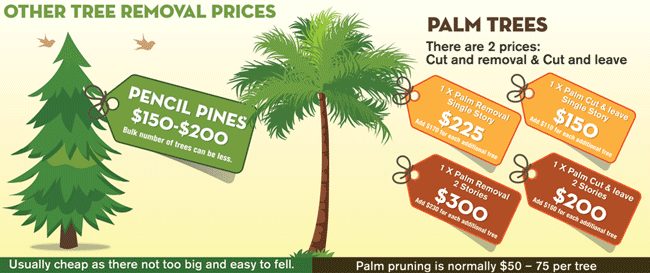Tree Care Throughout The Seasons: Best Practices For Taking Care Of Trees Before And Following Elimination
Tree Care Throughout The Seasons: Best Practices For Taking Care Of Trees Before And Following Elimination
Blog Article
Written By-
When it pertains to seasonal tree care, ensuring appropriate monitoring before and after elimination can dramatically impact the health and aesthetic appeals of your landscape. By understanding the essential steps associated with examining tree health and getting ready for removal, you can proactively safeguard your residential property. Yet what concerning the vital methods to comply with when the tree is gone? Keep tuned to uncover the important post-removal treatment steps that will certainly help you cultivate a flourishing and sustainable setting for your trees.
Pre-Removal Tree Treatment
Prior to resolving the elimination of a tree, it's critical to prioritize pre-removal tree treatment. Start by examining the tree's wellness and structural stability. Look for Read Significantly more of disease, pest invasions, or any kind of structural issues that may pose a safety and security danger throughout removal. It's vital to speak with a qualified arborist to establish the very best course of action.
Trimming dead or diseased branches can stop additional damages to the tree and make sure a smoother elimination procedure.
Furthermore, think about the ecological effect of getting rid of the tree. Trees play a crucial role in our environment, so planting a new tree in an ideal place can assist balance out any loss. Guarantee that you have the necessary permits and approvals for tree elimination, especially if the tree is safeguarded by regional laws.
Seasonal Maintenance Tips
Assessing your tree's requirements throughout the year is crucial for its wellness and longevity. To keep your trees in leading condition, comply with these seasonal upkeep pointers.
In springtime, concentrate on pruning to get rid of dead or damaged branches and encourage new development.
Summer season calls for regular watering, particularly during dry spells, to ensure your tree remains hydrated.
As fall techniques, watch out for early indications of disease or tension, and take into consideration applying compost to shield the origins during winter season.
In winter, be cautious when eliminating snow from branches to stop damage, and remain to check your tree's general wellness.
Bear in mind to change your treatment regular based upon the particular requirements of your tree varieties and local climate. By remaining mindful and proactive throughout the periods, you can aid your trees thrive and prosper for years to find.
Post-Removal Tree Care
To make certain the wellness of your landscape also after tree removal, proper post-removal treatment is necessary. After a tree is gotten rid of, it's essential to load the remaining opening with topsoil and small it to prevent settling. This will certainly aid keep the integrity of the ground and stop possible threats in the future.
Consider planting new plants in place of the removed tree to recover the equilibrium and aesthetic appeals of your landscape. Frequently water the area to advertise the growth of brand-new plants and prevent soil erosion.
Examine read what he said surrounding trees for any indicators of disease or stress that might have been brought on by the eliminated tree. Keep an eye out for parasites that could've been attracted to the previous tree and take safety nets to protect the staying plants.
If essential, speak with an expert arborist to evaluate the influence of the removal on the bordering trees and determine any kind of additional treatment needed. By following these post-removal care actions, you can ensure the ongoing wellness and appeal of your landscape.
Final thought
Finally, aggressive seasonal tree care is essential for maintaining the health and equilibrium of your landscape. By assessing tree wellness, pruning, and speaking with an arborist prior to removal, you can ensure a risk-free procedure. After removal, filling up the hole, growing new plants, and regular watering will promote new development and avoid disintegration. Bear in mind to evaluate bordering trees for disease and seek further treatment steps from an arborist to keep your landscape growing.
